Finding Equity, Part 2: Latino students share stories about Lowell’s lack of diversity
October 25, 2016
Finding Equity, Part 2: Latino students share their stories of problems with Lowell’s lack of diversity
By Clarissa Wan
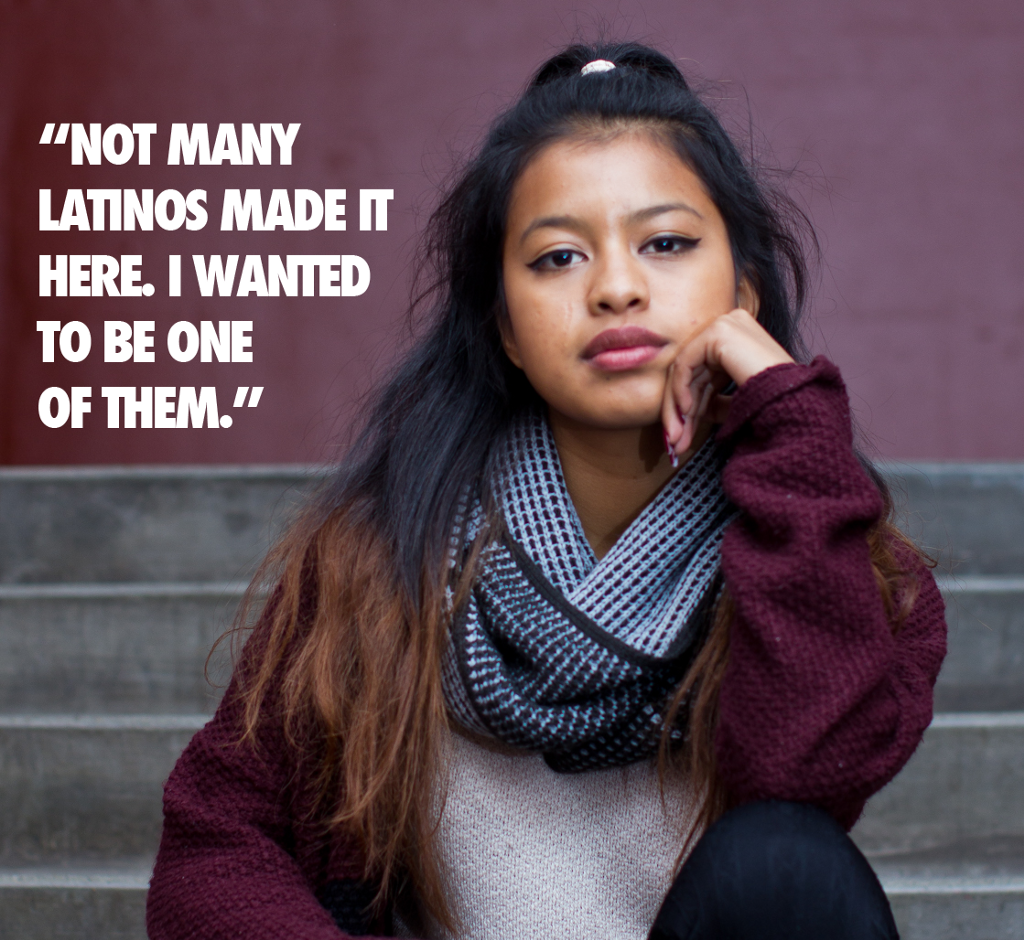
“Don’t you play soccer Luis? Can’t you answer this?”
The teacher’s question evoked low murmurs in senior Luis Ferrer’s math class. The question confused Ferrer — he’s never played soccer in his life. In the same class, Ferrer was also called “Jose,” even though there was no student named “Jose” in the class.
These awkward and culturally insensitive situations occur at Lowell, as the overall number of Latino students is still small despite a rise in the number of Latino students at Lowell since the early 2000s. In the 2000–2001 school year, 175 out of 2,506 Lowell students identified as Latino, comprising 7 percent of the student population. In the 2015–2016 school year, that percentage climbed to 9.9. This figure is still disproportionate compared to San Francisco Unified School District’s (SFUSD) percentage of high school Latino students, which stood at 25 percent.
“I heard how not many Latinos made it here, so I wanted to be one of them.”
Exclusion
Senior Meylin Rodriguez feels that many Latino students choose schools where there is a large Latino population, such as John O’Connell High School (57 percent Hispanic) and Mission High School (50 percent Hispanic), in order to find those with mutual cultural understanding and feel a sense of belonging.
For Lowell, when Latino students decide to apply, encouragement often comes from middle school counselors, teachers and parents, not peers. Lowell is often seen as a school for Asian and white students. “My friends just said that’s where all the super smart Asian kids go,” senior Johnny Hall said.
But this wasn’t the case for Rodriguez.
As an eighth grader, Rodriguez was looking for a challenge. She had heard how Lowell’s Latino student population was small compared to others. But she sought to break the harmful idea that Latinos simply were not smart enough to be admitted. “I heard how not many Latinos made it here, so I wanted to be one of them,” Rodriguez said. “That was one of my goals, to prove that I could actually [be admitted] and I could survive.”
“I saw that the people at the senior steps were white guys and girls. In the hallways too, it’s Asian people with Asian people.”
In many cases, Lowell’s Latino students feel isolated due to their ethnicity. “I remember when I was a sophomore, I saw that the people at the senior steps [courtyard steps] were white guys and girls,” Ferrer said. “In the hallways too, it’s Asian people with Asian people.”
Self-segregation can cause feelings of inferiority. “Most of the stuff I hear from students is that they often feel like they’re less than [others],” Community Health Outreach Worker Xavier Salazar said. In the Wellness Center, Salazar hears many stories about how Latino students feel excluded because of their ethnicity when students form groups in class. One example: when doing group work in her Advanced Placement World History class, sophomore Lucy Perez felt that her group mates were not taking her answers into consideration. She wrote about it on a participation feedback sheet. Fortunately her teacher, Matthew Magsanay, wrote back, encouraging her to continue speaking her mind. “It was nice, to know someone actually cares,” Perez said.
Another challenge is that Latino and African American students’ achievement is lower than other ethnicities’ in the district as a whole. Because of this, at times, Latino students at Lowell feel that there is a stigma based on the middle school they attended, specifically regarding whether it had a large percentage of Latino and African American students, such as James Lick Middle School (71 percent Hispanic) or Everett Middle School (56 percent Hispanic).
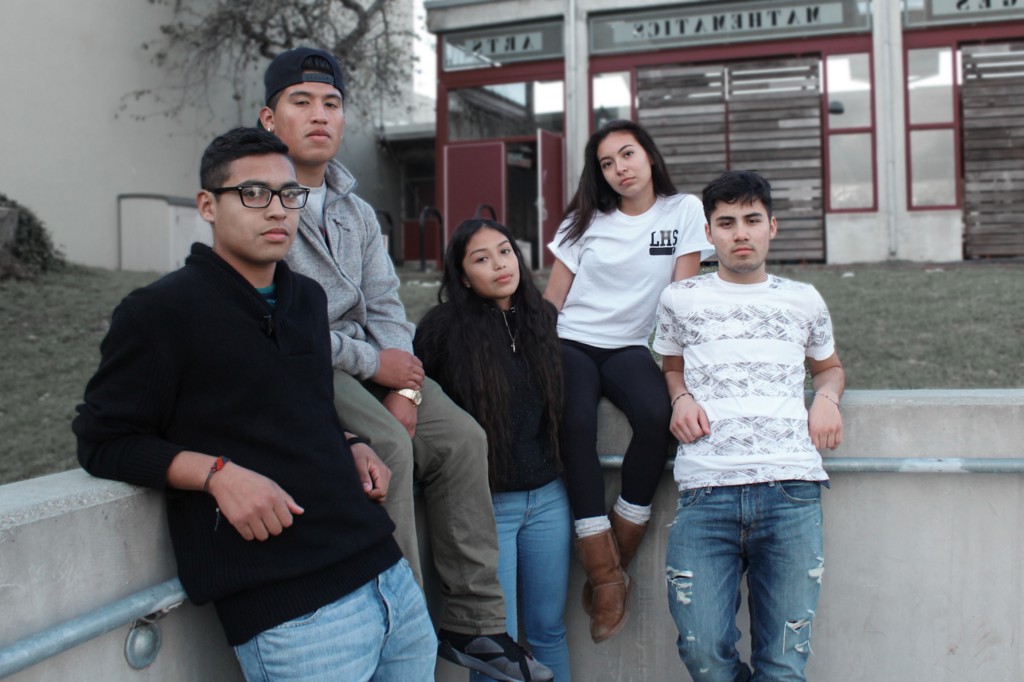
Junior Andrea Cardona came from James Denman, a district middle school which is 40 percent Hispanic. “Freshman year especially, everyone asks what middle school you come from, and people would say they never heard of Denman, or where it was, or if it was even in San Francisco,” Cardona said. “I just felt that everyone judged you.”
The social struggle is combined with academic struggle. “Freshman year I actually struggled a lot, and even though I went into Study Skills I wasn’t being interactive with the school,” Cardona said. “Academically, I felt like I had no contact with my teachers and I felt like I had no support from them.”
Senior Maria Tec Poot came from Kipp San Francisco Bay Academy, where 60 percent of students are Hispanic, and struggled to fit in at first. In freshman year she was placed in Academic Literacy, a class to help students transition into Lowell. “I felt really dumb because no one from my middle school was placed into the class except me,” Tec Poot said. “Plus, I felt like I had to start all over and make new friends.”
Rodriguez struggled immensely during freshman year — she remembers receiving her first “D” grade on her report card. “From 8th grade my GPA dropped from a 4.0 to around a 2.0, and that was huge for me,” Rodriguez said. “I remember crying a couple times.”
Rodriguez joined the varsity girls’ soccer team in freshman year, and soccer became her outlet. “My dad would always talk about how I had a really bright future in soccer, and I want that,” Rodriguez said. But she had trouble balancing her commitments to school work and the team until sophomore year.
Microaggressions
As a minority, Latino students also face many microaggressions, the everyday slights, intentional or unintentional, that communicate negative messages to people based on their marginalized group membership.
In the classroom, microaggressions can appear as subtle jabs at intellectual ability. During junior Raina Serrano’s accelerated math class freshman year, she realized she was the only Latino in her class. When she told her table mates what she realized, they started making jokes about Mexicans. “I remember that entire week, I just kept going back to that class and felt so uncomfortable,” Serrano said.
“Why am I treated this way when I’ve treated everyone else decently?”
In Cardona’s biology class, a classmate questioned if she was born in the United States, suddenly veering off topic from a discussion about work. Cardona felt that this question was unwarranted, and that others viewed her as an outsider. “Why am I treated this way when I’ve treated everyone else decently?” Cardona said.
In Rodriguez’s Academic Literacy class freshman year, she was talking to a Latino friend in Spanish. A male student interrupted the conversation and told her to speak English “because they are in America.” Rodriguez stood up for herself and expressed pride in her culture and language. “I find it funny and ironic how some people try to stop you from speaking your language,” Rodriguez said. “Because in high school, some of them are actually taking that language.”
Rodriguez, is one of the few Latino players on the school’s varsity girls soccer team. Last season, she and two other students were the only Latinos on the team out of over twenty players total.
She has heard many jokes based on her interest in soccer. When people see how she runs quickly, they jokingly say, “Oh yeah, because you ran across the border.”
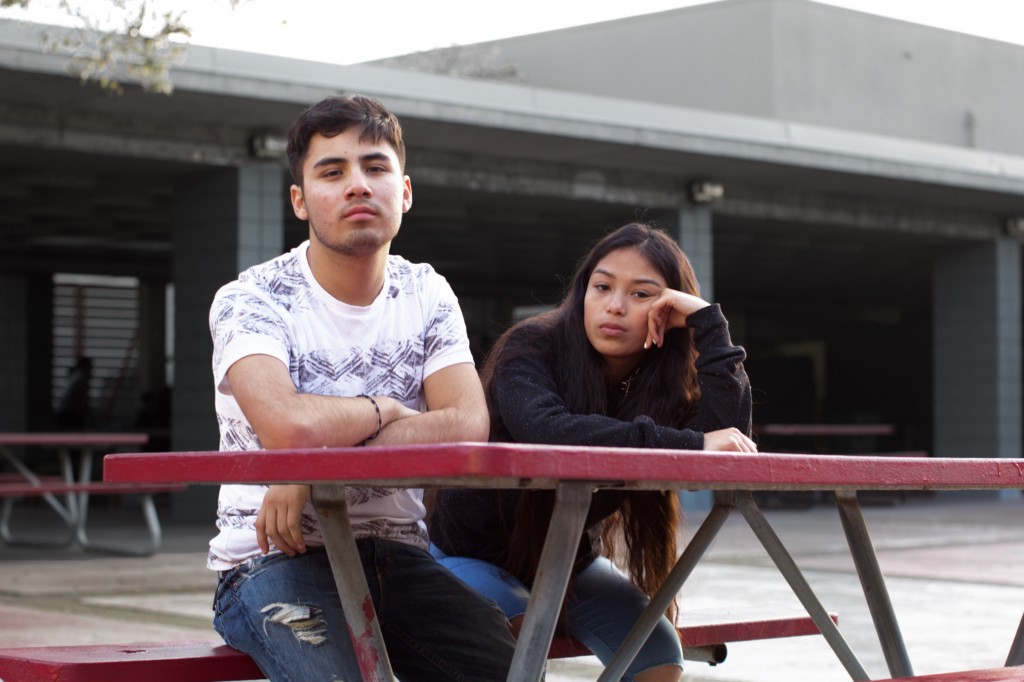
During her freshman and sophomore years on the team, Rodriguez felt distanced from her team members due to her different playing style, in which she tended to handle the ball by herself. Eventually, she adapted to the team’s style and became closer to her teammates.
“We have a reputation of being inclusive and we never meant to hurt anyone, and our priority is that everyone feels included.”
In Rodriguez’s sophomore year, the team had an informal photo session before one practice with the help of a parent volunteer. After taking a team photo, there was time for other groupings to take photos. They took photos in groups such as Hapa players, Jewish players and blonde players. Rodriguez asked her teammates for a photo of the Latino players, but was brushed off in the hurry to start practice. The same thing happened when they took team photos the following year. Rodriguez ignored it at the time, but looking back, she said she felt hurt by the incident.
In a recent group discussion with Rodriguez and several members of the team, the players expressed a hope that a similar situation would not arise again. “We have a reputation of being inclusive and we never meant to hurt anyone, and our priority is that everyone feels included,” senior goalkeeper and veteran player Adriaan Denbroeder said. Rodriguez added that she understands the team can overcome these types of situations together.
After learning about the incident, varsity girls’ soccer team head coach Eugene Vrana said in an interview that he does not tolerate any instance that causes harm or discomfort to any player for any reason.
He said he did not address the photo incident at the time because he was not aware of it, but that if any similar situation re-occurred, the coaching staff would address it by group discussion with the team.
Vrana said he will bring up the issue of cultural sensitivity at the first meeting of the season. “We are going to make sure that we more explicitly address diversity and multicultural issues within the team as a basis for unifying the team,” Vrana said.
Stereotypes
With non-Latino peers, Latino students may be stereotyped by others who are not aware of the diversity of Latin American cultures, from Central and South America.
“People wonder why I am not hanging out with people who speak Spanish, why I don’t speak Spanish to other friends, or why I don’t know as much Spanish as I should know.”
People often assume that Rodriguez is Mexican, but actually she is Honduran. “I think what bothers some of us about it is that it’s not just the about the names Mexican, Salvadoran or Honduran,” Rodriguez said. “But it’s that we all have different traditions that we all appreciate.”
One way to demonstrate each country’s unique traditions is through dance. At this year’s Kermesse, La Raza, a Latino cultural club, performed cumbia, a dance from Colombia that melds influences from African, European and Indigenous cultures, and bachata, a dance from the Dominican Republic that blossomed as the dictatorship in the country faded, and has now developed many fusion styles. “You can tell a story by dancing — every culture has something different,” Cardona said.
Soccer is popular in Latin America and has played a large part in the history of its countries. It is an important pastime for many students, as it is for Rodriguez, but defining Latino students solely by their interest in soccer can be harmful. In junior Cinthya Arellano’s Physical Education class during her sophomore year, there was a unit on soccer, and her classmates assumed she could play soccer well. “[My classmates] would say, ‘If you aren’t good at this then you shouldn’t call yourself Latina,’” Arellano said.
As Latin America encompasses many countries and ethnicities, Latinos also have diverse physical and linguistic traits. Some Latino students have a light skin color, and may pass as white. Junior Angelina Picazo is Mexican-American but often mistaken as white. She also finds that people expect her to be fluent in Spanish, though she isn’t. “People wonder why I am not hanging out with people who speak Spanish, why I don’t speak Spanish to other friends, or why I don’t know as much Spanish as I should know,” Picazo said. “There’s more to me and my community.”
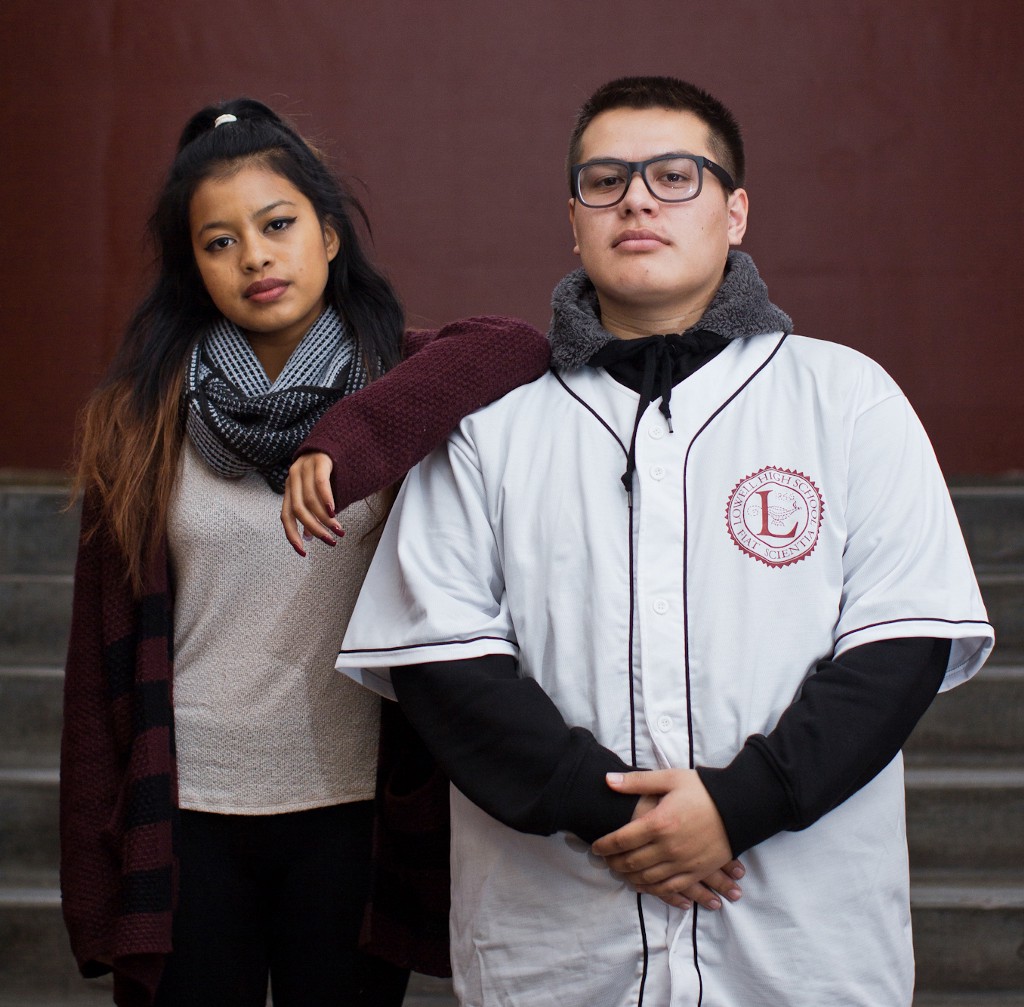
Latino students with a lighter skin color are sometimes excluded from typical Latino stereotypes. Senior Isabel Alves de Lima, who is half Brazilian and half white, feels that she benefits from the assumption that she’s fully white. At Alves de Lima’s former job with the Contemporary Jewish Museum, she noticed that people were more comfortable approaching her than her darker-skinned Latina coworker. “In this culture, it’s been taught through media portrayals of Latino people that they’re up to no good,” Alves de Lima said. “So me being white, not having an accent — all of those things make me seem more trustworthy.”
Code Switching
Latino students can feel as though they seen as an outlying entity, and being a minority at Lowell may include the pressure of representing the entire Latino community, according to Salazar, who has worked with many minority students in the Wellness Center.
Education in the United States has a eurocentric bias behind it — curriculums across subjects are not always culturally relevant to students of color, as many narratives come from the perspective of European figures. This bias may disengage students from academic learning, according to a 2011 report from the National Education Association.
“Lowell’s like a plain soup, and I wanna bring spice, like Tabasco sauce, cajun sauce.”
“From the content you’re learning, to the way you’re being taught, to the way you’re being disciplined, to the way you walk into a classroom, it’s all something that’s different for students of color,” Salazar said. “[Students] have to learn all this content that doesn’t relate to them, and have to learn to catch up culturally.”
In addition, many students learn to “code switch” at school. Code switching is when a student alternates between two or more languages or varieties of language in conversation. Studies have shown that students who learn how to code switch early on have higher academic achievement in elementary school than those who took longer to learn how to do so. In school, students essentially learn how to adapt to a mainstream white culture, according to Salazar. “That’s not saying you have to drop your language at home, but you have to be able to switch it on and off,” he said.
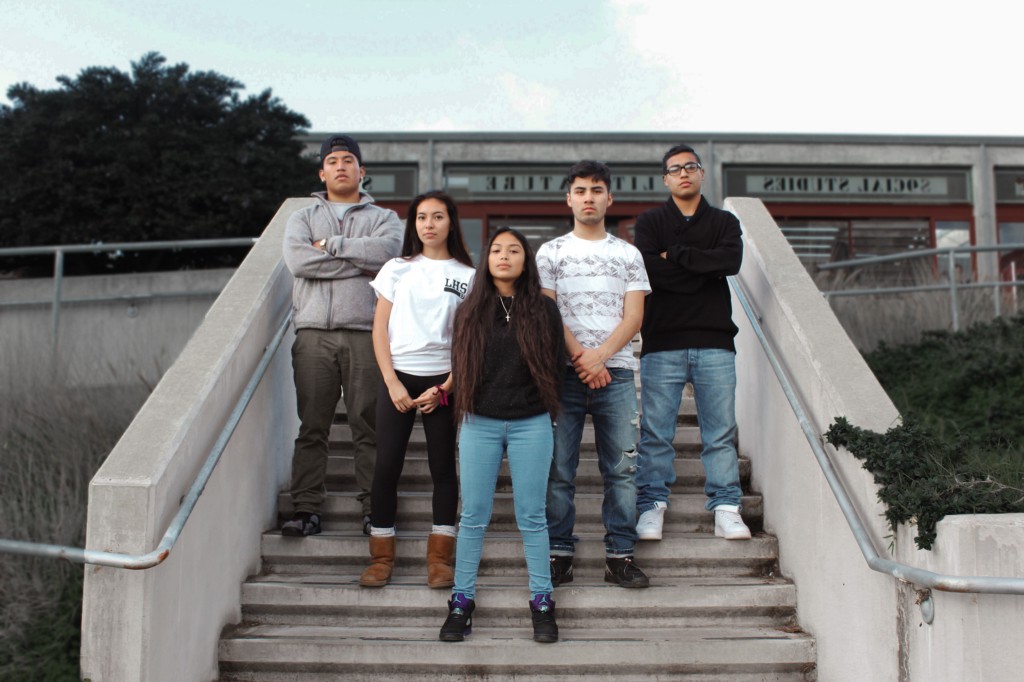
Hall feels that code switching compromises each student’s individuality. He has noticed how some Latinos around him have conformed to whiteness, and believes that people should express their culture no matter what people say. Hall is outspoken about bringing his individuality to Lowell. “Lowell’s like a plain soup, and I wanna bring spice, like Tabasco sauce, cajun sauce.”
Some Latino students feel that their individuality is limited by the demographic categories on college applications. The University of California application and the Common App have a general question race and ethnicity preceded by a separate checkbox for Hispanic and Latino students. This is to gather data on the diversity of applicants and to verify Equal Opportunity for all minorities under Title VII of the Civil Rights Act of 1964. However, many students feel singled out by this option, like Ferrer. “It just made me feel different, like an ‘other,’” Ferrer said.
Support
There is support for Latin American culture at Lowell, especially in clubs like La Raza and Nuestra America.
Nuestra America members discuss global politics, especially recent news surrounding Central America. These discussions also include an exploration of Latino identity, which helps students understand the Latino community more deeply.
“If they can do it, I can do it.”
Besides organizing dance assemblies, La Raza has met with members of San Francisco State University’s Hermanos Unidos, a collegiate organization that aims to help Latino students succeed in school. Seeing the positive benefit of the organization on Latino students, Salazar, who is also the La Raza club sponsor, hopes to create a mentorship program with them and provide a space for students to learn from those with similar backgrounds. Rodriguez found that meeting college students with Hermanos Unidos was a great source of encouragement. “That really stuck with me, because if they can do it, I can do it,” Rodriguez said.
For Latino students, Lowell can be a difficult, but strengthening experience. After her freshman year, Rodriguez’s situation improved greatly, with the help of the Wellness Center. Rodriguez’s learned how to balance her school work and soccer commitments and her grades rose to all A’s and B’s in sophomore year. In junior year, she made new friends by joining La Raza, and also made the starting lineup of the soccer team. Her outlook brightened. “Just by being here, we’re already breaking some stereotypes,” Rodriguez said. “We’re showing people that we can graduate from one of the top schools in the district.”
Ophir Cohen-Simayof, Stephanie Li and Whitney C. Lim contributed to the reporting for this article.
This story is part two of The Lowell‘s “Finding Equity” series. Part one looked into the African-American experience at school, and part three will explore methods to increase enrollment and support of minorities at Lowell.
Originally published on March 3, 2016

